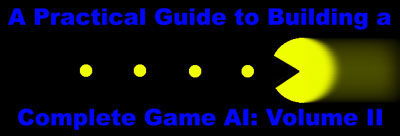11/10 - 11/12 @ Montréal, Canada
12/5 - 12/7 @ Shanghai, China
12/24 - 12/27
2/28 - 3/4 @ San Francisco, CA
More events...
2406 articles in the reference section.
Help us fight cancer!
Join SETI Team GDNet!

|
PursuitOnce your enemies have found a target, you won't want them to just wander around aimlessly if they lose sight of their prey. At this point you need to make a choice about how you wish to handle your searching though. Up until now we have only talked about spotting units based on actually being able to see them. In some cases this may get a little tricky when pursuing an enemy, so you may opt to cheat and just set the destination of the unit being tracked as the tracker's destination.
In this way we assume that the target ran away from the unit and if we are correct, the unit will hopefully find him quickly after passing the first destination. In case the unit did not find his target, we can make a back up plan of setting a patrol at random distances around where the first destination was. So the unit will go back to the spot his target was last seen and will walk in a pattern searching for him. While this doesn't cover a lot of possibilities, it does give us a reasonable response given the situation. ConclusionThe secret to implementing all game AI is the understanding the cases you are trying to deal with and the results of what you want it to look like. If you can picture what you want the actions to look like and formulate an algorithm to make them turn out that way you are 90% of the way done. However the last 10%, getting it to work, can easily take 10 times as long as figuring out how to do it…
The first article: Practical Guide to Building a Complete Game AI: Volume I |
|||||||||||